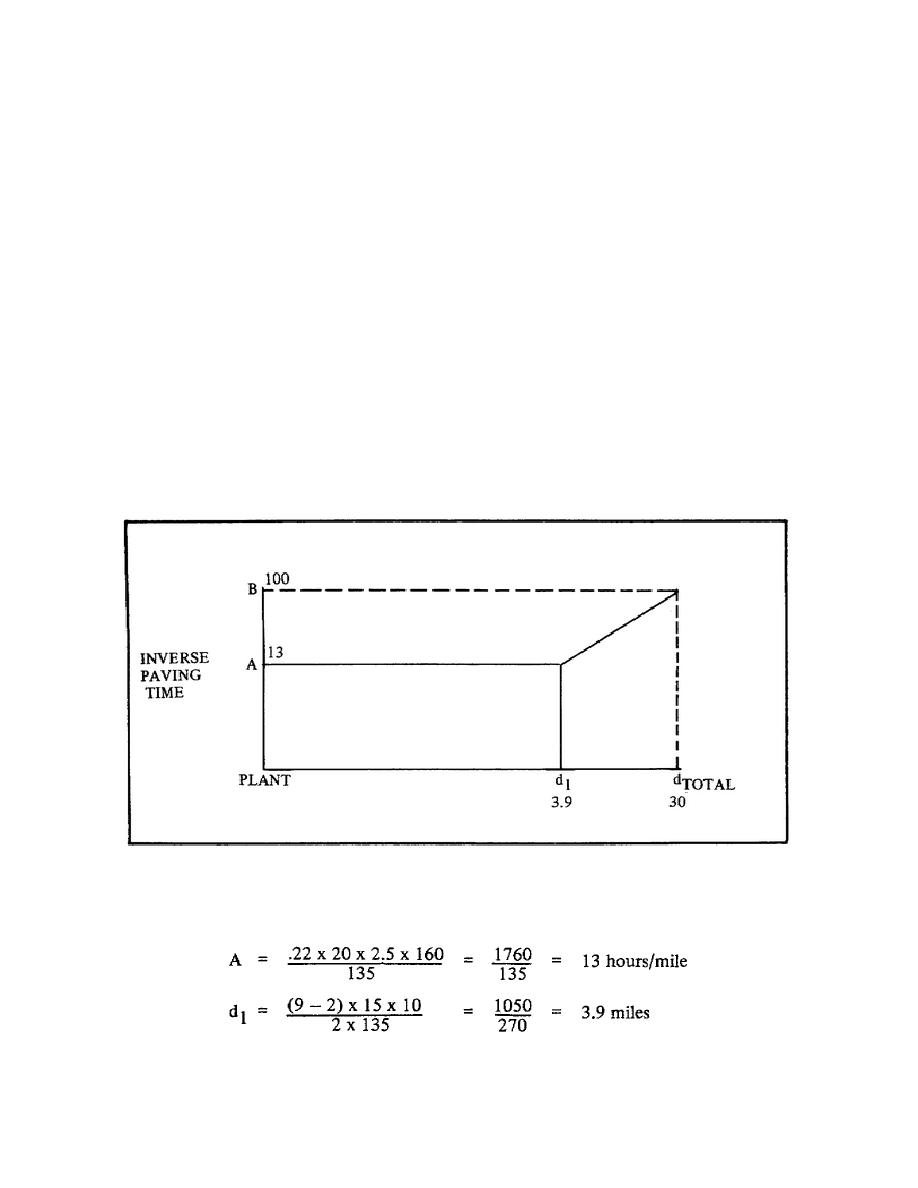
Lesson 4/Learning Event 1
dtotal = Distance in miles from the plant to the end of the paving project
Now, knowing the values for A, B, d1 and dtotal, we can calculate the total paving time. As
stated earlier, the total paving time is equal to the area under the line of the graph (Figure 10).
The area under the line can be divided into two areas: a rectangle and a triangle. In Figure 10,
the rectangle has a height of A and a length of dtota1. The triangle has a base of (dtotal - d1) and
a height of (B - A). The area of a rectangle is equal to height times length and the area of a
triangle is equal to one-half times the base times height. Thus, the area under the line is:
Paving Time (Area) = A x dtotal + 1/2(dtotal - d1)(B - A)
Example: Assume that you are about to pave a 3D-mile stretch of road starting at the plant. The
road is to be paved 20 feet wide and 2.5 inches thick. The plant produces 135 tons of mix per
hour at a unit weight of 160 pounds per cubic foot. You are using nine trucks traveling at an
average speed of 15 miles per hour. Each truck has a dump size of 10 tons (see Figure 11).
FIGURE 11. INVERSE PAVING TIME
From the information given we know dtotal is 30 miles and A, d1, and B can be calculated as
follows:
43



 Previous Page
Previous Page
